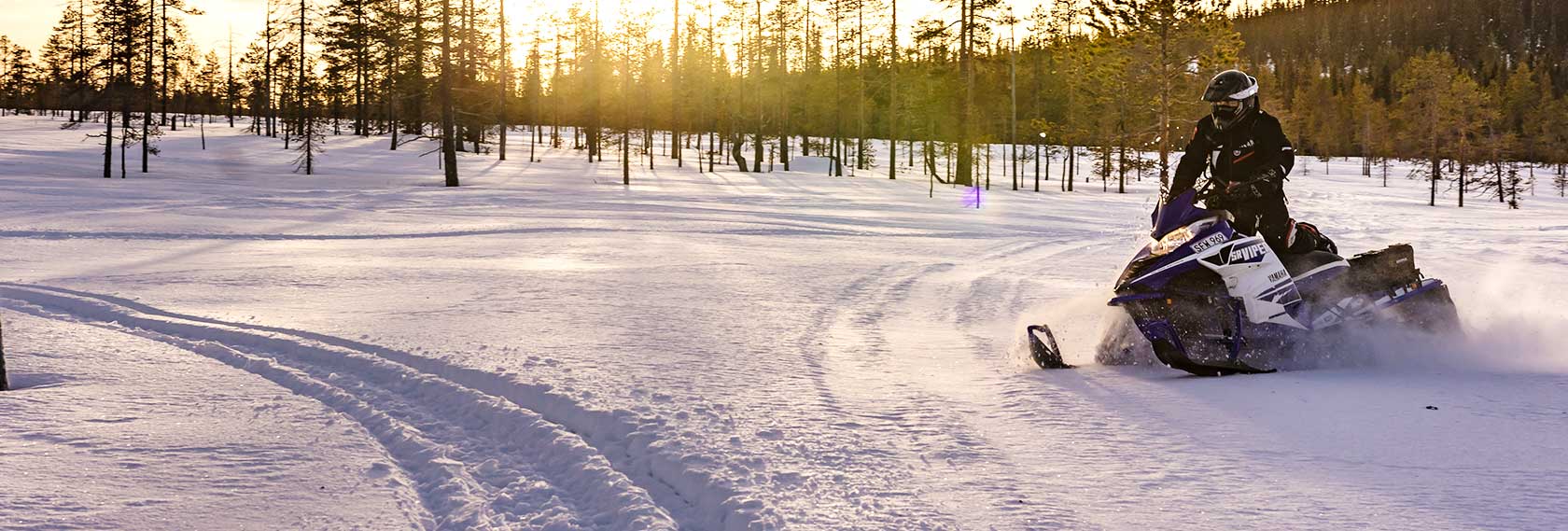

SLP Straight Line Tracking versus Simmons Flexi Ski: Your intrepid reporter is at it again. I could see a gaping hole in the Internet chatter about which type of skis to purchase for your sled. Everyone and his brother are claiming the skis they just bought are the greatest thing since sliced bread and how junky their stock skis are. The last time a ski test was performed by any of the major magazines was around the mid 90’s and with all the new players in the market and interesting new ski designs, I thought what better time than now to take a look at what’s available? Is there a gaping hole here or what?
Okay, so let’s start with the basics. SLP stands for Starting Line Products and the ski being tested is the Straight Line Tracking. Simmons comes to the table with their venerable Flexi Ski platform. Both of these skis are for groomed trails and are aimed at giving the rider the best results in all types of conditions. I tested the skis on my 2010 Z1 Arctic Cat and 2005 Firecat F7. Please remember that the same skis may act differently on another brand of sled and that will very likely depend on geometry of the suspension, machine setup, and rider position.
First up is the SLP. Right away I noticed how much lighter this ski is than the stock Cat boards. This lightness translates into more absorption of bumps and trail chatter, not to mention the reduction in un-sprung weight. The design is pleasing to the eye, many people swear by these skis for overall comfort. I can testify that having had them on my Firecat for many years they really rock. They have zero darting but do have a little push in the corners both on the Z1 and the Firecat. What strikes me most about these skis is their smoothness on the trail. They are not overly aggressive they just do their job mile after mile without any negative feed back. The skags have a spoon type setup underneath to track in their own ruts and not others. They go for around $300 and are highly recommended for high mile trail riders.
Next up is the Simmons Flexi Ski on my Z1. The first thing I noticed was the apparent wide width. However, tape measurements show that this was an illusion caused by flatness at the top of the ski. They have a nice design, using a double runner carbide skag. The bottom is concave so they float or plane up on the snow, keeping the trail chatter to a minimum. This trait was a pleasant surprise, which I liked very much. They took zero time to get accustomed to. At around 25-30 MPH you can actually feel the ski begin to plane up on the snow. It’s the same sensation you get while downhill skiing in virgin powder. Wow!
So how did it go around the corners? This ski really railed, I could put the sled anywhere I wanted to, in any turn. The double carbide design bites well on ice and about the only negative is that they are hard to turn on icy conditions from a dead stop. Once you got moving the steering effort was no different that any other ski out there despite some perceptions of the double runner design. The skis really absorbed a lot more chatter and bumps than the SLP’s or the stock Cat skis and just gave me an overall feeling of confidence. They did dart some, although I can say it was not annoying in any manner. It only happened when following someone else who had the same exact skis!
Stock skis just don’t cut it anymore and this is one writer that hopes someday we can order sleds from the factory with any ski we want, just like different grades of tire options on new cars.
To sum it up, either of these skis will give you many miles of comfort and wear. The SLP are for the high mile trail cruiser while the Simmons play more to an aggressive rider. Trust me you will not be disappointed with either one. Only in America can one have so many choices. I like it! I’ll have more ski tests as soon as the snow arrives.